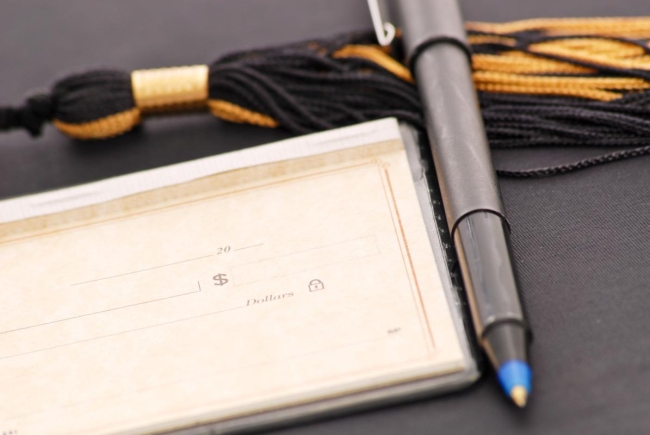You have /5 articles left.
Sign up for a free account or log in.

jcjgphotography/Getty Images
College tuition increased at historically low rates for the second year in a row, a new report from the College Board shows. In fact, after adjusting for inflation, average college tuition actually decreased during the 2021-22 academic year as colleges scrambled to attract and retain students amid steep enrollment declines.
Average tuition increased by 1.6 percent, to $10,740 for in-state students at public, four-year institutions, according to the report. At private, nonprofit four-year institutions, average tuition increased by 2.1 percent to $38,070. Average tuition at public two-year institutions rose by 1.3 percent to $3,800 for in-district students. These averages are not adjusted for inflation.
The small increases did not come as a surprise to Jennifer Ma, senior policy research scientist at the College Board and co-author of the annual “Trends in College Pricing and Student Aid” report. Dozens of colleges froze or lowered tuition during the pandemic to help keep college affordable. At the same time, enrollments have steadily declined across all types of higher education institutions.
“It’s just a reminder that the pandemic is still impacting higher ed and students and families this current academic year,” Ma said.
The average sticker price for in-state students at four-year, public institutions was lowest in Wyoming and Florida, where tuition cost $6,100 and $6,370, respectively. The highest sticker prices were in New Hampshire and Vermont, where tuition was listed at $17,040 and $17,750, respectively.
For public, two-year colleges, the lowest average tuition was in California and totaled $1,430. The highest average cost for a public, two-year institution was $8,600 in Vermont.
The average net price for in-state students at public, four-year institutions reached $2,640 this year, the lowest it has been since the 2006-07 academic year. Net price is the amount students and families pay out of pocket after federal and institutional grant aid is subtracted from the tuition price. The average net price for students at private, nonprofit institutions also hit a low this year at $14,990.
First-time, full-time community college students are still receiving enough grant aid to cover their tuition and fees, and they have been since the 2009-10 academic year, the report showed.
Community colleges have been hit especially hard by the pandemic. Since fall 2019, enrollment at public two-year institutions has declined by 14.1 percent. Falling enrollment is top of mind for community college leaders as they set tuition, according to Ma.
“We know that community colleges saw large declines in enrollment last year, so that’s a really big concern still for many college leaders,” Ma said. “They’re trying to hold tuition steady, to make college affordable for students.”
It’s also a top concern for David Baime, senior vice president for government relations for the American Association of Community Colleges. He was surprised to see that enrollment declines at community colleges were as steep as they were this fall.
“The enrollment declines dwarf everything else,” Baime said in an email.
College affordability is also a concern for independent colleges, said Marjorie Hass, president of the Council of Independent Colleges. Many private institutions rely heavily on tuition revenue to pay their bills, and they have to strike a delicate balance between tuition sticker prices and institutional aid. The prices must be high enough for the college to bring in revenue, but low enough that the college can still dole out sufficient aid to keep tuition affordable for all students, she said.
“You can raise tuition as high as you want, but if you can’t provide additional need-based aid to match that, you’re just going to price students out of your college,” Hass said. “It’s more complicated than just picking a dollar number.”
During the 2020-21 academic year, full-time undergraduate students received, on average, $14,800 in financial aid, according to the report. Of that, $10,050 came from grants, $3,780 from federal loans, $880 from education tax credits and $90 from Federal Work-Study.
Federal Pell Grant expenditures declined to $26 billion in 2020-21 from a high of $42.3 billion in 2010-11, according to the report. The number of Pell Grant recipients totaled 6.2 million last year.
In total, students and parents borrowed $95.9 billion during the 2020-21 academic year. Last year marked the 10th consecutive decline in higher education borrowing, the report stated. Average federal loans per full-time undergraduate student fell to $3,780 in 2020-21, down from $6,160 in 2010-11. For graduate students, the average federal loan was significantly higher, at $17,540.
More than half of borrowers with education debt owed less than $20,000 as of March 2021. About 45 percent of outstanding education debt is held by 10 percent of borrowers who owe $80,000 or more, the report stated.
As of March, nearly a quarter of the outstanding $1.59 trillion in student loan debt was held by borrowers 50 or older. This debt includes Parent Plus loans that borrowers have taken out for their children’s education.
“Borrowers are getting older,” Ma said. “In 2021, these borrowers hold 23 percent of all the outstanding debt. In 2017, it was 18 percent. So the share of the loans they’re holding also has been increasing.”




